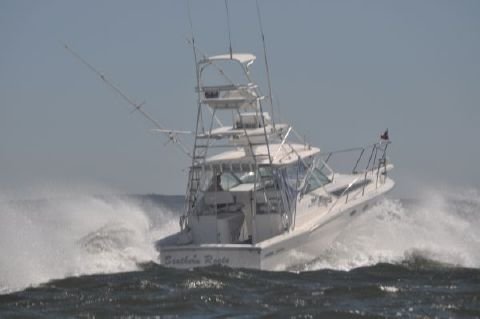Art:
Right you are,driving one of those boats is a lot of fun. However, before you will be sitting in the Captain's chair, you will have a lot more than 6 hrs at the helm, in the roughest of conditions, just to prove you have the skills. That represents a huge commitment of your time and a very understanding Admiral.
I began volunteering with our local RCMSAR last summer. It took till the middle of August to get a ride on the boat, where the Coxswains could get a look at my actual skills. Then it took until early October to get a ride in 2m seas and 35k winds. This ride had me sidelined until we had completed a rescue and were heading home, when I was given the helm. Up to that time, the guy with the most experience, who had also demonstrated a high level of competence at the helm, took us to the rescue site.
Since then I have been flattered by the other crew who give me the helm whenever some difficult maneuvering is contemplated. I am sure this will not be mimicked by the other new crew and they come on board, as nobody else in the group of recent recruits has the years of experience that I have.
Since early November I have been away, and the other new Crew have been training, so I will again have hill to climb, just to get back to where I was when I left. I expect to be back in the saddle Mid- April. I am not expecting my absence over the winter to work in my favour. Then there is the summer vacation time, when I will be using my own boat and ignoring call out commitments to the SAR.
And no, we don't use seatbelts in our open RIB. We have shock absorbing seats for 3 and anyone else stands and just hangs on.



